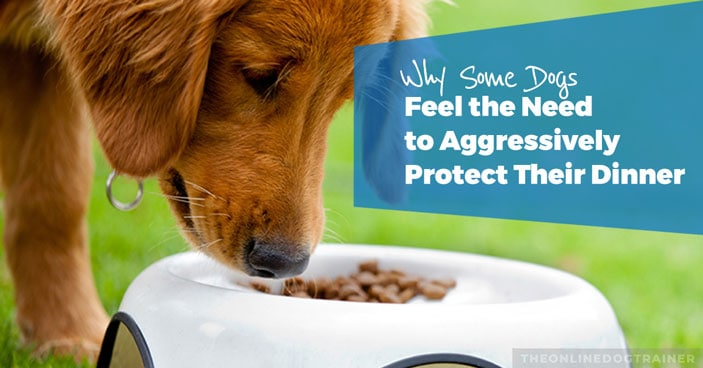
Food aggression is a dangerous behavioral issue that often results in accidental injuries to both humans and other household pets.
The worst part…
While this type of behavioral issue is often found in dogs who have been rescued from neglectful situations, the behavior also pops up frequently in dogs who don’t have a proper training foundation.
So, what causes food aggression and what can you do to ensure your pup doesn’t develop this dangerous behavior?
Keep reading to find out…
What Is Food Aggression?
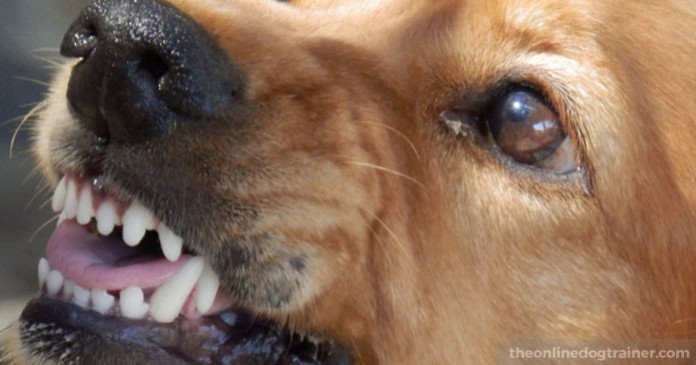
Food aggression is simply the act of a dog aggressively lashing out toward a human or another animal when food is present.
The behavioral aspects of food aggression may include…
- Growling if you/an animal gets too close to your dog's food bowl.
- Stalking you for food.
- Biting, attacking, or lashing out at humans/other animals who come between your dog and his food.
- Guarding food even when they are not eating it.
There are varying levels of food aggression behavioral issues—from growling to biting—but all should be taken seriously.
Why Dogs Have Food Aggression
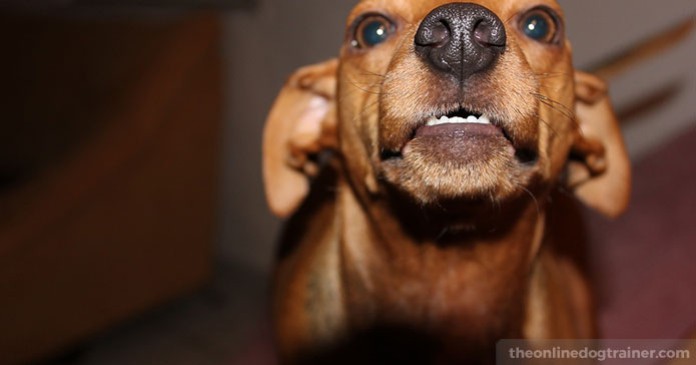
Often serious food aggression is found in dogs who have been rescued from neglectful situations.
The reason: dogs who have been neglected have to fight to survive.
Sadly, when a “fight or die” instinct has been triggered, a dog will do almost anything to ensure he doesn’t lose out on his next meal.
You can’t blame the dog for this.
If you and your family were starving and a loaf of bread was to suddenly appear on the street in the midst of several other hungry families, I’m sure you’d do your best to grab the bread and fight off others who were trying to take it from you.
However, another very common but least understood reason a dog might be aggressive towards food is that he believes he is the boss and in charge.
The more your dog thinks that he is in charge, the more he will feel like he controls the food. Often eating before everyone else, including you!
This behavior comes from nature when dogs were wilder in packs and still exists in the wolf pack to this day. The wolves that are the strongest determine who eats what and when—usually eating first and or feeding their young.
Being a dog person, I always find it amusing when I see humans at the dinner table serving any ‘visitors’ first. This is because they are the ‘important people’ and so the person in charge of the food decides to feed them first!
If your dog has this mentality that ‘they are in charge’ there’s a good chance that he won’t take kindly toward someone potentially taking some of his food away or getting in the way of his eating!
How to Put an End to Dangerous Food Aggression Behaviors
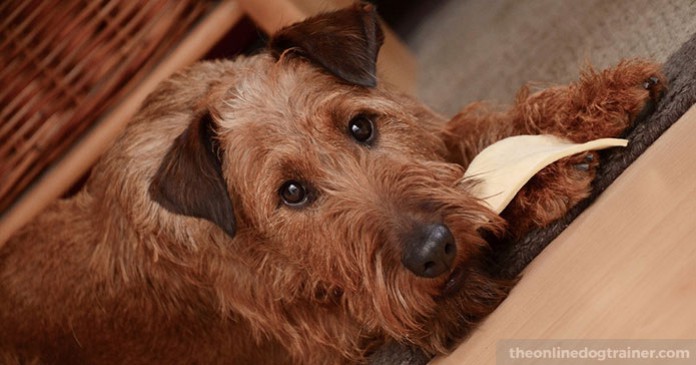
Food aggression is a very serious issue that must be addressed in your home—especially if you have small children or other pets.
Here are a few ways you can help your dog relax when it comes to food so he doesn’t feel the need to vigorously protect his meals
Technique #1- Stick to a Feeding Schedule
Believe it or not, a routine is important for dogs.
This is especially true if you have a dog that’s recently come out of a neglectful situation.
Dogs are incredibly smart, so they are able to key in on patterns.
For example, most dogs have a general idea of when it’s time to go out in the morning, when it’s walk time, and when their owners will be coming home from work every day.
It’s almost like a sixth sense.
For that reason, it’s no surprise that your dog will also key into breakfast and dinner time routines if you keep them on schedule.
Pick a time every day to feed your pup and stay consistent.
Doing so and sticking to a routine will help your pup get rid of some anxiety toward mealtimes.
I once worked at a doggy daycare with a huge pack of dogs. One day a dog named ‘Demo’ whom I loved very much turned up out of sorts and I couldn’t work out why. He had no energy and seemed very grumpy, in the afternoon he got into a fight. When his owners picked him up I asked them if anything different had happened to him. They replied… ‘Oh, we forgot to feed him this morning!’
I am sure this was a contributing factor! In our family, when we are hungry and become angry we call it “hangry.” And I believe it's the same with dogs…A dog with a full belly is a happy dog!
Technique #2 – Supplement Your Dog’s Diet throughout the Day
It’s very important to monitor how much your dog eats every day so he doesn’t gain too much weight.
That being said, if your dog has stress-or anxiety-related food aggression issues, supplementing his meals so he knows he will be continually fed might help.
The logic behind this is simple…
You keep your dog’s belly full so he doesn't stress about food. At the same time, your dog will learn to look to you for food and will associate you with food in a positive way.
In order to do this in a healthy way, I recommend you break your dog's normal-sized breakfast and dinner into 4-6 smaller meals. The other trick you can use if you use dry food is to soak it overnight so it swells to a much larger volume. This gives your dog the perception that there is a lot more food being offered and they feel fuller.
Doing this will ensure you are able to feed your pup multiple times a day without overfeeding him. The food you give your dog or puppy could also simply be rewards that you give them during training throughout the day.
Once your dog gets comfortable and understands you’ll provide food for him every day, you can cut back on the number of mini meals you give him and get back on to a normal feeding schedule.
Technique #3 – Training the sit and wait command
Training your dog or puppy to sit and wait for their food calms their mind and their body.
Here’s a short video showing you how you can do this with younger puppies. It’s taken from inside ‘Project Moses’ the video diary of my puppy Moses when he was 14 weeks of age.
Technique #4 – Avoid leaving food down
One of the biggest mistakes that I see is people leaving dogs food down. There are a number of reasons that this is not a good idea.
First, leaving food down attracts flies and other unwanted animals and pests, never mind the smell that can be produced in warmer weather!
Second, dogs digestive systems are not designed like grazing animals such as cows who eat slowly all day long. Rather they are animals who eat much larger meals quickly a couple of times each day. (Pups can often eat up to 4 or 5 times a day when very young)
Third, by leaving food down, which your dog is not eating, you give your dog the wrong message. You tell your dog that they are in charge. This produces a dog who is far more likely to make their own decisions, ignore you and even tell you off if they don’t agree with you…so watch out!
If your dog is not eating the food, pick it up.
Technique #5 – Establish yourself as the provider
This final technique is the most important—establishing yourself as the one in charge and the provider. This part is crucial as dogs who think they are in charge are always going to try to control the food in unpredictable ways…
As we talked about earlier, many dogs have food aggression issues simply because they believe they are the “pack leaders” or put another way, the ones in charge.
If a dog has this mindset, it’s more likely they’ll get cranky and lash out if they think someone is trying to steal his meal.
The good news…
It’s easy to establish yourself as the leader in a kind, gentle way. It simply just takes a little time and patience.
One of the easiest ways to reassure your dog that you are the provider is to always eat your meals first before you feed your dog.
You can even eat a little bit of your food over your dog’s food bowl to show him you’re the one that gets to eat first—you’re the one in charge.
It might feel silly, but your dog will understand the point you are making.
Making sure your dog understands that you are the provider isn’t usually that hard. It just takes some understanding and patience. Once you get this bit in place, everything else falls into place…
It’s something I’ve helped tens of thousands of people establish with their dogs and it’s what I am totally passionate about because it changes the whole relationship you have with your dog for the better.
If you’re interested in finding out more, check out The Dog Calming Code.
In this program, I’ll give you step-by-step instructions on how to establish yourself as the one in charge or the decision maker. The knock on effect of this is that your dog will relax and focus on you so much more resulting in a more responsive dog who is easier to train!
Or, if you currently have a puppy, you can begin setting a solid foundation with my Puppy Coach training program.
Next Steps to Helping Resolve Your Dog’s Food Aggression Issues
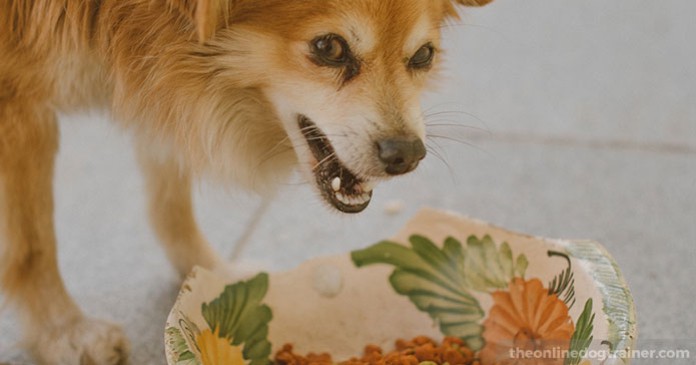
Food aggression is a very serious issue that can result in serious injury to other dogs and people.
If your dog exhibits any signs of food aggression, be sure to…
1. Put a comprehensive training program in place—like The Dog Calming Code.
2. Keep kids and other pets away from your dog while he eats.
3. Ensure your dog feels safe while eating meals.
How do you help your dog feel safe while eating?
I’ve put together a FREE guide on 3 ways you can help your dog feel safe during mealtimes.
↓Download the FREE guide here!↓
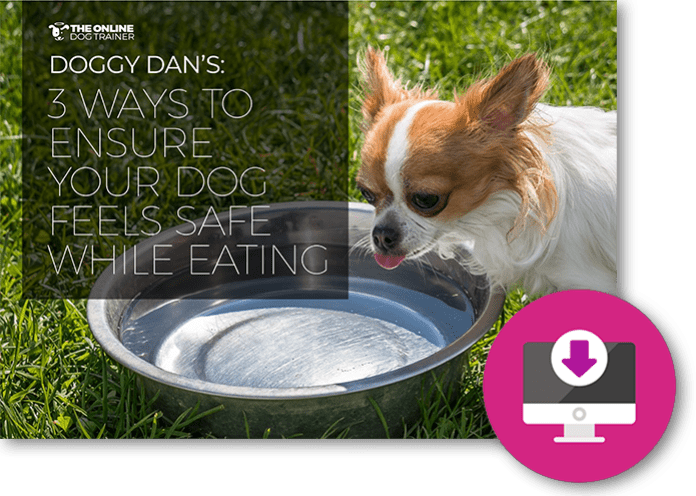
Best wishes as you work with your pup.
Cheers,

~Doggy Dan 🙂




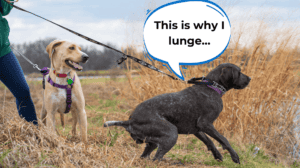
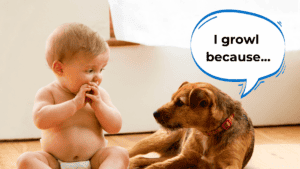
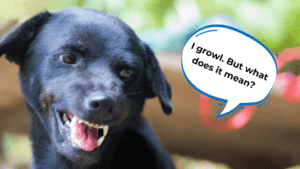
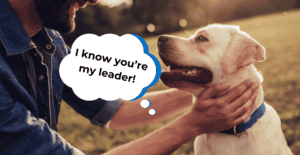
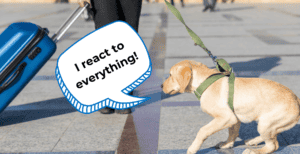
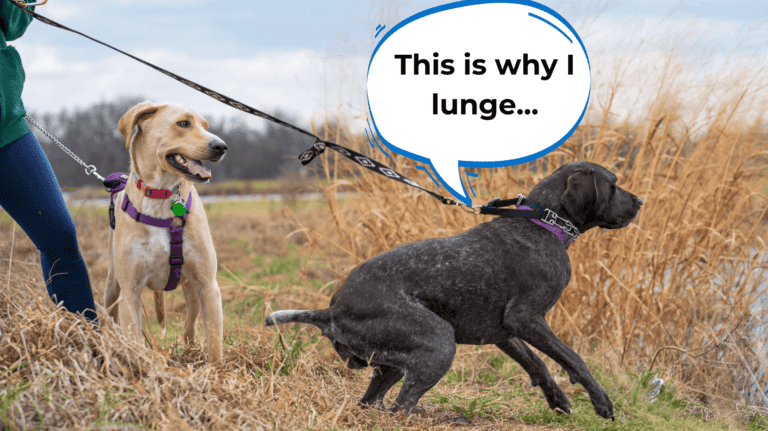
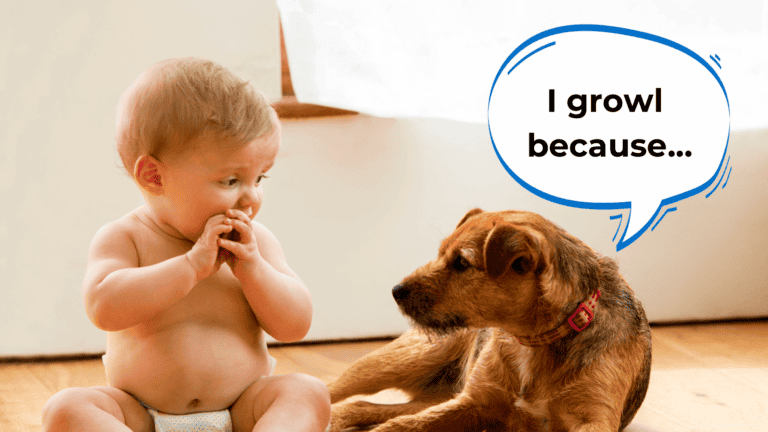
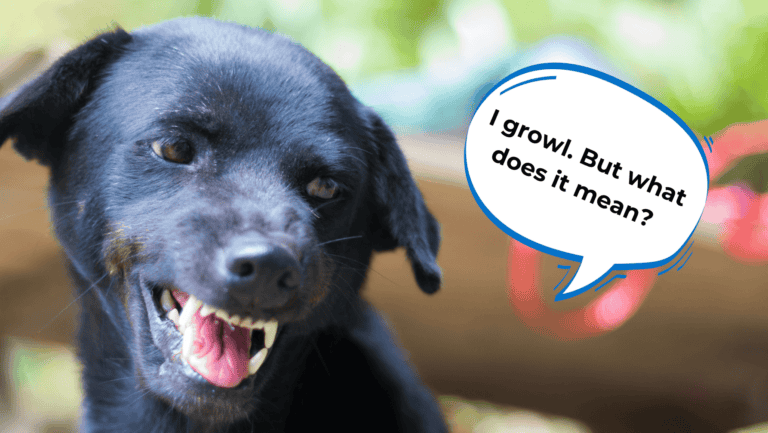

13 Responses
I have an almost 3 yr old female golden retriever who was spayed. We have struggled with multiple trainers on handling her food aggression. I can put her food bowl down but I have to back away immediately. You can’t touch her or go near her. She will growl and try to bite. I do make her sit before I put it down. Sometimes she will give me her paws and spin around. I’ve tried changing her to raw food… didn’t help. I’ve tried calming treats. And now she’s also gotten super protective over me and nipped me at the groomer’s pretty good
Check out the free webinar, you’ll love it!
The Reactivity Webinar happens weekly on Wednesday and Sunday at 3pm EST (USA time). The link for the webinar is here, and you can choose this week or the following week: https://theonlinedogtrainer.com/reactivity-webinar/
If you register, you’ll get the recording via email after the webinar
We have had our 1-year-old female Chessy, for 2 months She absolutely inhales her food. We have a “slow-feeder” dish, up on an 8-inch stand, but she takes seconds to eat (twice a day) the recommended amount of kibble plus, blueberries, raw green beans, and chopped zucchini. She waits to be told to eat, most of the time, We eat our dinner before we feed her and eat a biscuit out of her dish before putting it down. Her weight is right on and she has been checked for worms/parasites. Is there any way we can slow her down? or is this ok to let her eat like this? She doesn’t growl around her food.
My now 9 year old rescue, ( we got him at 10 weeks) is becoming aggressive towards my husband at dinner time. I won’t have guests because of this. He gets fed at 5pm, and we don’t eat until after 7. He tries to park himself between us , and I’ve been bad over the years giving him scraps from the table. Tonight he snarled at my husband when he went to pull out his chair to sit (counter height). We yelled at him, and put him in the bedroom , why is he now getting aggressive for food? I think my husband needs to start feeding him and walking him, but that’s not realistic. Once we let him out, he’s calm as can be. He will sit, lay down, and wait, when I feed him, even after I put the bowl down. He eats every meal like it’s his last. Eats junk on the ground, constantly hunting for more. He’s NOT underfed.
Hi Candy, it’s important to deal with this type of behaviour calmly and consistently. Scalding a dog or telling them off can often just add energy to the situation, meaning that a dog becomes more defensive or they find it difficult to learn the lesson clearly. You have a few option here….you can place your dog in their crate or in another room when you are eating or you can teach them to respect boundaries around the dining table. Leaving a leash attached to your dog’s collar around meal-times will make it easier to manage his behaviour….essentially if he invades your space too much or it getting a bit ‘pushy’ then without a word take up the leash and move him further away from the table. Work on a ‘3 strikes and you’re out’ rule, meaning that if he continues to space invade then he will be removed from the room altogether. It is vital that you remain calm and I would absolutely limit verbal communication or eye contact….he will learn what is required of him much better if he has clear space to think. Hope that helps! Doggy Dan
Thanks for this interesting article. We have some aggression issues with our 5 month old pup, but it is mainly aggressive behaviour around possessions, for example – a bone or a favourite toy – or something he has stolen which he knows he shouldn’t have! We have two young children and he is particularly bad with this around them. Any advice you can offer would be much appreciated!
Hi Leah…Retrieving stolen items from a dog is something bets done with minimal fuss and attention. If your dogs has something he shouldn’t then calmly remove the item…without saying anything or making eye contact. Another option is to offer an item your dogs is allowed to have and exchange it for the item he shouldn’t have. You could also teach him a ‘leave it’ command, which is best practiced at times when eh doesn’t have a forbidden item in his possession. When it comes to bones…..make sure he is left alone when eating these items. They are considered a high value resource and some dogs will defend these items instinctively. Best…Doggy Dan
I read this article because we have 6 mth old pup who had serious food aggression. Although it’s not completely gone, it is much improved using these methods.
Another issue we have is understanding our pup. He seems to love a cuddle and will come up to get cuddles whenever he can but when you rub his back, legs, head he makes a growling sound and quite regularly bares his teeth. If you stop rubbing, he will grab your hand and harass you to continue but if you keep rubbing he will swing his head around as if to bite. I’m confused and would welcome any assistance with this issue.
Hi Sarah,
When some dogs or puppies feel like they are controlling when we give them affection, it can lead them to also then directing exactly where we pat them. Essentially if your dog approaches you and initiates you giving him affection then he may feel he can direct where and how you pat him. Try this, and I know it will be emotionally hard to do, if your dog tries to get you to pat him or give him affection just ignore him until he gives up and walks away…at which point you can then call him back to give him a fuss BUT the important difference is that you are the one who initiated that interaction (not him). It may mean that he will be happy for you to pat him wherever you like, but if he does start to growl, then I would immediately end the interaction so that he learns growling means affection will stop. Best, Doggy Dan
My dog is not aggressive about her food. She is aggressive about trying to get my food out of my hand while I’m eating anything.
Hi Lily,
If your dog is trying to grab food out of your hand then it may help to plan ahead and pop her out of the way until you are done eating. If she mainly does this when you are eating food at her level, say on the couch or coffee table, then I would recommend sitting higher up at a table to eat. If she starts to harass you then ignore her but if she continued or is way too pushy then calmly (calm is key!) remove her from the room to help show her that the behaviour will backfire on her. f you are consistent then she will quickly learn to use a little more self control. Best, Doggy Dan
I do not have anger issues with my dog eating my issue is that he will not eat unless I am in the room with him I have tried telling him to eat I have tried leaving the room but I still have an problem getting him to eat when he does eat he does eat all the food so I do not have to pick it up for him, I also have a female dog that is a grazer I wonder if I should start to pick up her food if she does not eat at feeding times?
Hi Marge,
The reason that some dogs prefer to eat when their owners are in the same room is so the dog can keep an eye on them and make sure they are safe. Many dogs feel that it’s their responsibility to keep their family safe and alive, and that means knowing where they are at all times. Even if a dog is hungry they may feel that it’s far more important to make sure their human is safe, rather than let them out of their sight and eat. There are certainly things you can do to help your dog relax and enjoy his food when you are out of the room, maybe take a look at my membership website for guidance, its a $1USD trial for 3 days..and we do cover how to help picky eaters as well! All the best…Doggy Dan